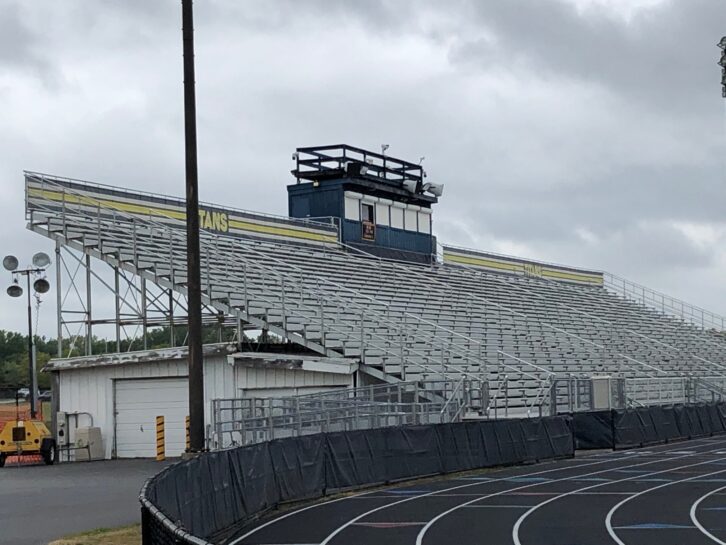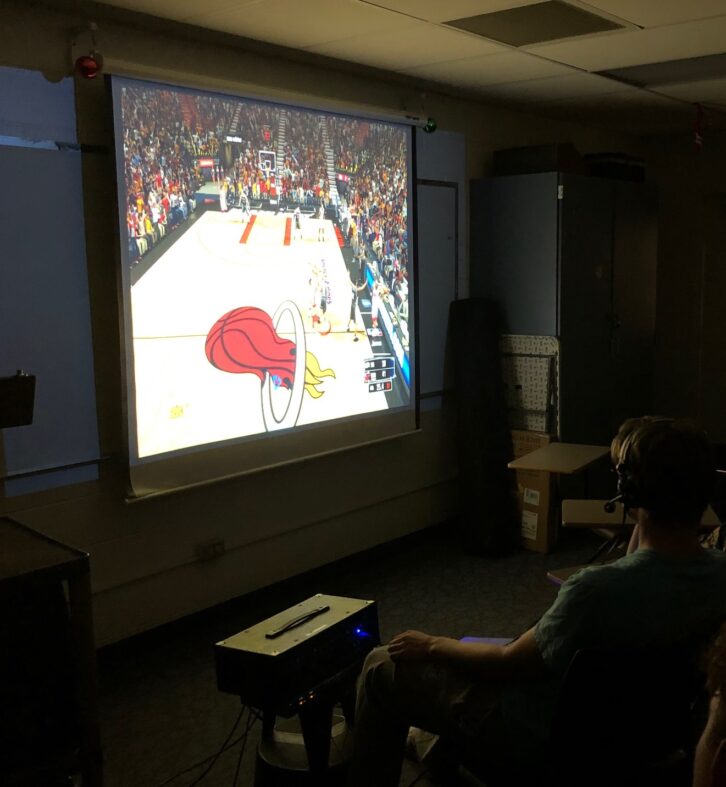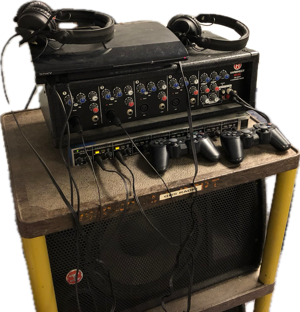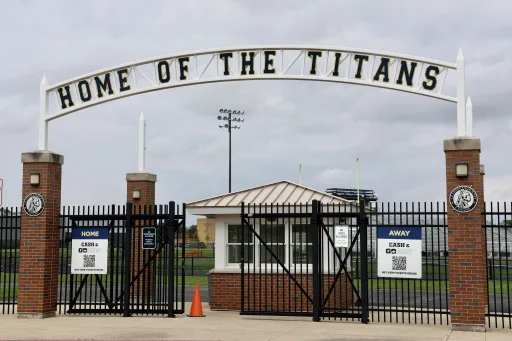The author is faculty advisor of Glenbrook South High School’s radio station WGBK(FM), located in Glenview, Ill.
The Glenbrook South High School radio program started in the 1970s as a way for students to provide “programming” to the school over the building’s public address system. With a turntable and a microphone, a handful of students were able to participate in a rough approximation of radio broadcasting.
By the early 1980s, the school began to rent evening time from a nearby community station so that students could have a much more authentic radio broadcasting experience.
During the 1990s, the school district purchased the community radio station, and the Glenbrook South radio program continued to grow with the allocation of studio space and investment in professional-grade equipment. The station’s call letters were changed to WGBK (W GlenBrooK) to reflect ownership by a school district that had recognized the value of the station to both students and the community.
In the decades since the district’s investment, the Glenbrook South High School radio program has grown due to both increased enrollment (students who opt to take the classes) and extra-curricular involvement (students who do not take the classes, but participate in after school broadcasts). Students who choose to take the courses progress through a sequence that focuses on core concepts, skills and principles.

An Intro to Sports Broadcasting
News & Sports Broadcasting (N&S) is one of the courses offered through the program. The N&S course focuses on training students as journalists, writers, producers and performers. As broadcast journalists, students produce interviews with student athletes and coaches, while also seeking interviews with local, national and sometimes international newsmakers.
As writers, students are required not only to write and edit broadcast scripts, but also to use correct broadcast news style when writing copy for the newscasts aired during student-produced evening music shows.
As performers, students are assigned daily sports talk programs, may get involved in Saturday sports talk broadcasts and may also take part in the coverage of live high school sports.
The easy part, of course, is that producing, writing and even hosting programs lend themselves to repetitive classroom practice and regular feedback. Students have access to the three Mac-based production suites using Adobe for audio and different word processing programs for writing.
The main broadcast studio allows students to either go live on the frequency (WGBK 88.5 FM), to broadcast only on the web stream, or to operate in audition to practice only in the studio.
While important, though, these experiences don’t necessarily lend themselves to helping students to see early that the power of radio is immediacy and mobility.
Addressing Challenges
At the high school level, live sports broadcasts provide most of the earliest remotes in which young broadcasters get involved. With basic equipment and a cell or WiFi connection, students can bring their audience along to other places to experience in real-time what might be more difficult with other media.
To get students “out there” broadcasting, the Glenbrook South N&S students provide radio broadcasts of football and baseball games (we turn to TV style coverage for basketball and sometimes water polo games).

Announcing live games requires students to step outside of the school day. This causes some challenges. Because of both team schedules and students’ responsibilities, the number of students who can get involved is limited as is the number of experiences that each student can be offered. Consequently, the students really don’t get the repetition necessary for developing skills in live event coverage.
What is needed is a simulation that allows students to make mistakes, repeat performances and take risks without the fear of making errors during a live event.
[Related: “This High School Takes Radio Seriously“]
Live Event Simulation
It didn’t take long to realize that playing video games and having students provide play-by-play of the virtual games could provide a safe, familiar and motivating way to simulate live remotes. Most students in the N&S classes are familiar with playing sports video games on popular game consoles (in this case we use an old Sony PlayStation).
Also, games’ settings allow us to change time and slow down games. Finally, games can be reset, which allows students to repeat performances, while also having the benefit of being fairly random (opposed to using taped games) because the games are played live.

The setup is not complicated. Students are organized into groups of four with color and play-by-play announcers in the front two seats and the video game players in the back. Games are set with two-minute quarters, and the players skip over the in-game timeouts. The goal is to have as many teams rotate through announcing and playing the game as possible.
Announcers wear broadcast headsets hooked to a PA system so the classroom can hear the play calling. The announcers’ audio is returned through a headphone amplifier so the play callers can hear themselves in their headsets. The entire setup fits on an old AV cart!

Announcing a Game
The practice usually begins with two skilled students setting the example for how play-by-play and color work together in a radio broadcast. The focus is on being descriptive and painting a picture.
Many students default to a more conversational style, while neglecting information radio listeners can’t see, such as time and score, announcer names and station identification. Most students only watch sports, so radio style game announcing takes practice!
It doesn’t take long, though, for students to “feel” the differences between “radio style,” which is sharing with listeners what they need to create their own pictures, and “TV style,” which is much more of a conversation under game film.
Once the more skilled partners have set the example, novice broadcasters are paired with skilled game announcers. Each partner gets a chance to broadcast play-by-play for a two-minute quarter while the other provides brief color commentary. The limited time pushes the students to remain concise.
When partners have completed their turns announcing, they move to playing the game. With an entire group of classmates watching, there is a fairly natural exchange of what the group liked and didn’t like about a particular announcing team’s style. With teacher guidance, a usually-positive feedback system develops.
Time to Think Outside the Box
The video game system brings benefits as an instructional tool. Video games support a simulation that allows students to get an approximation of a real-world experience. The simulation is safe, motivating and adds the convenience of stopping a game in progress to allow the instructor to comment on what students are doing, and to allow students to reflect on their own practice.
The simulation is also safe. Students can make errors without fear of major on-air mistakes like freezing during a live broadcast or making larger mistakes like forbidden “slips of the tongue.” It’s better to learn to control frustration in a classroom than to “earn” a fine from the FCC for language.
Admittedly, there are limitations. Students have to rotate through the process quickly because of class schedules and the needs to address other topics and to complete other projects. Also, even the most focused student can get bored and want to view playing video games as “playtime,” without focusing on the activities’ intended purpose.
Finally, nothing replaces real world experience. Arguably, calling video game sports is really best used to give students an introduction into live sports broadcasting so that getting behind the mic during a live event is not a completely unfamiliar experience.
Over the past several years, student feedback to the experience has been positive. For the most part, students have viewed the in-class play-by-play practice positively. They’ve commented that it helps to have practice before heading to the football stadium or sitting at half court. Even the students who have no time or inclination to broadcast live games enjoy the exercise. Who wouldn’t like to play video games in class!
